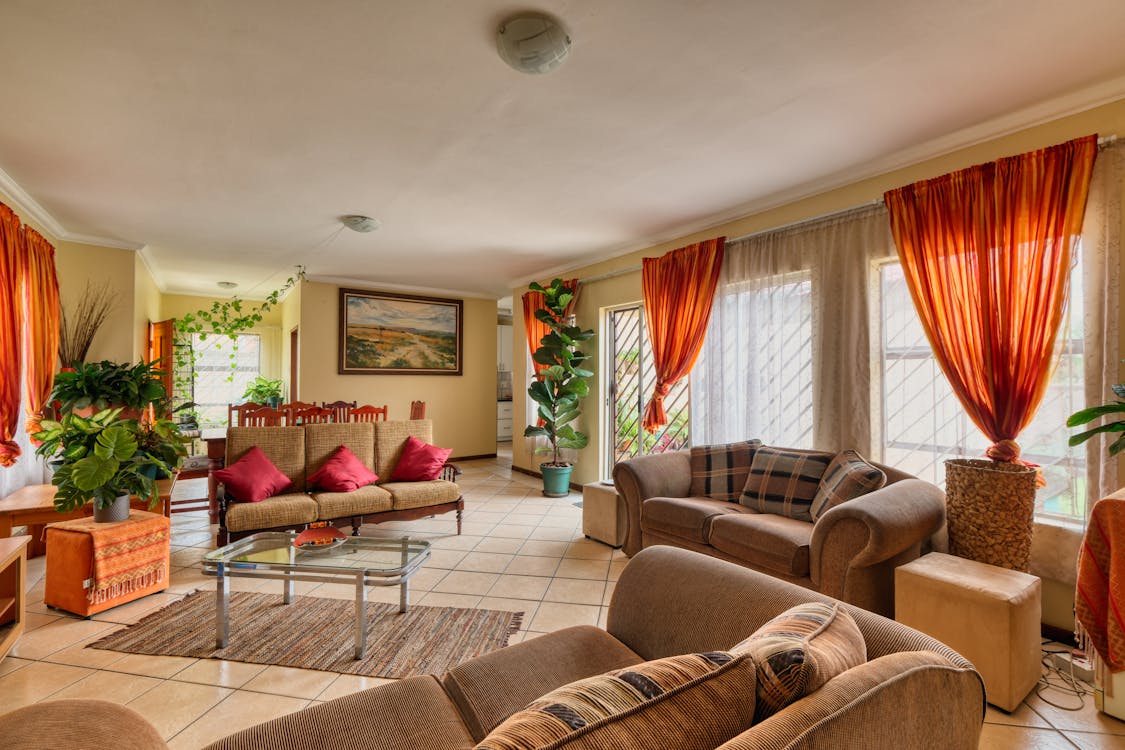
In today’s fast-paced world, having a peaceful space to unwind is essential for mental and physical well-being. A Zen-inspired lounge at home can provide the perfect retreat for relaxation, mindfulness, and rejuvenation. Whether you’re looking to meditate, read, or simply escape the stresses of everyday life, designing a Zen lounge is all about simplicity, balance, and harmony. In this article, we’ll explore essential tips to help you create a tranquil and calming home lounge.
1. Embrace Minimalism
The foundation of a Zen lounge is minimalism. To create a peaceful environment, start by decluttering the space. Remove any unnecessary items or distractions and focus on simplicity in both design and decor. The goal is to create an open, clean space that fosters relaxation and mental clarity.
Choose furniture and decor that are functional and meaningful, avoiding excess. Opt for simple, clean lines and natural materials like wood, bamboo, or stone to bring a sense of calm and balance to the room.
2. Choose a Neutral, Earthy Color Palette
The colors you choose for your Zen lounge should promote relaxation and calm. Stick to a neutral and earthy color palette, using shades like soft beige, warm greys, muted greens, and whites. These colors mimic the natural world, helping to create a sense of harmony and balance within the space.
If you want to add some contrast or visual interest, consider incorporating natural textures like wood or stone rather than bright or bold colors. This keeps the atmosphere tranquil and grounded.
3. Incorporate Natural Elements
Bringing nature into your Zen lounge is a key aspect of creating a peaceful and relaxing environment. Natural elements such as plants, water features, and wood help connect the space to the outdoors, fostering a sense of serenity and balance.
Consider adding a small indoor fountain to introduce the calming sound of flowing water. Houseplants like bamboo, peace lilies, or ferns can purify the air and add a touch of greenery, while wooden furniture or accents bring warmth and an organic feel to the space.
4. Maximize Natural Light
Natural light is essential for creating a calming Zen atmosphere. If possible, position your lounge in a space that receives ample sunlight during the day. Large windows or sheer curtains that let in sunlight create a warm and inviting atmosphere, while also fostering a connection to nature.
If natural light is limited, opt for soft, warm lighting from lamps or candles to mimic the gentle glow of the sun. Avoid harsh or bright overhead lighting, which can disrupt the soothing ambiance you’re trying to create.
5. Incorporate Soft Textures for Comfort
While minimalism is key in a Zen lounge, comfort should never be sacrificed. Incorporate soft, natural textures like cotton, linen, or wool to add warmth and coziness to the space. Choose plush cushions, soft throws, and comfortable seating that invites you to relax and unwind.
Floor cushions or low seating options, like a futon or a bean bag, can also enhance the feeling of groundedness and calm, aligning with the Zen philosophy of simplicity and connection to the earth.
6. Use Calming Scents and Sounds
Engage your senses by incorporating calming scents and sounds into your Zen lounge. Aromatherapy can play a powerful role in relaxation—consider using essential oils like lavender, sandalwood, or eucalyptus in a diffuser to fill the room with soothing fragrances.
Sound is also a key element in creating a peaceful environment. Soft, calming music, nature sounds, or the gentle trickle of a water feature can enhance the overall ambiance. Avoid loud or jarring noises and instead focus on sounds that promote mindfulness and relaxation.
7. Create a Dedicated Meditation or Relaxation Space
To fully embrace the Zen concept, it’s helpful to designate a specific area in your lounge for meditation or quiet reflection. This could be a corner with a comfortable cushion or mat, surrounded by peaceful elements like candles, plants, or a small altar with meaningful objects.
Keep this space free from distractions, and use it as a sanctuary for mindfulness practices like meditation, deep breathing, or yoga. This dedicated area will help you cultivate a sense of inner peace and make it easier to step away from the busyness of daily life.
Conclusion
Creating a Zen home lounge is all about designing a space that promotes peace, mindfulness, and relaxation. By embracing minimalism, using natural elements, and focusing on comfort and simplicity, you can transform your lounge into a tranquil sanctuary. Whether you’re meditating, reading, or simply unwinding after a long day, these essential tips will help you cultivate a serene environment where you can recharge and reconnect with yourself.




